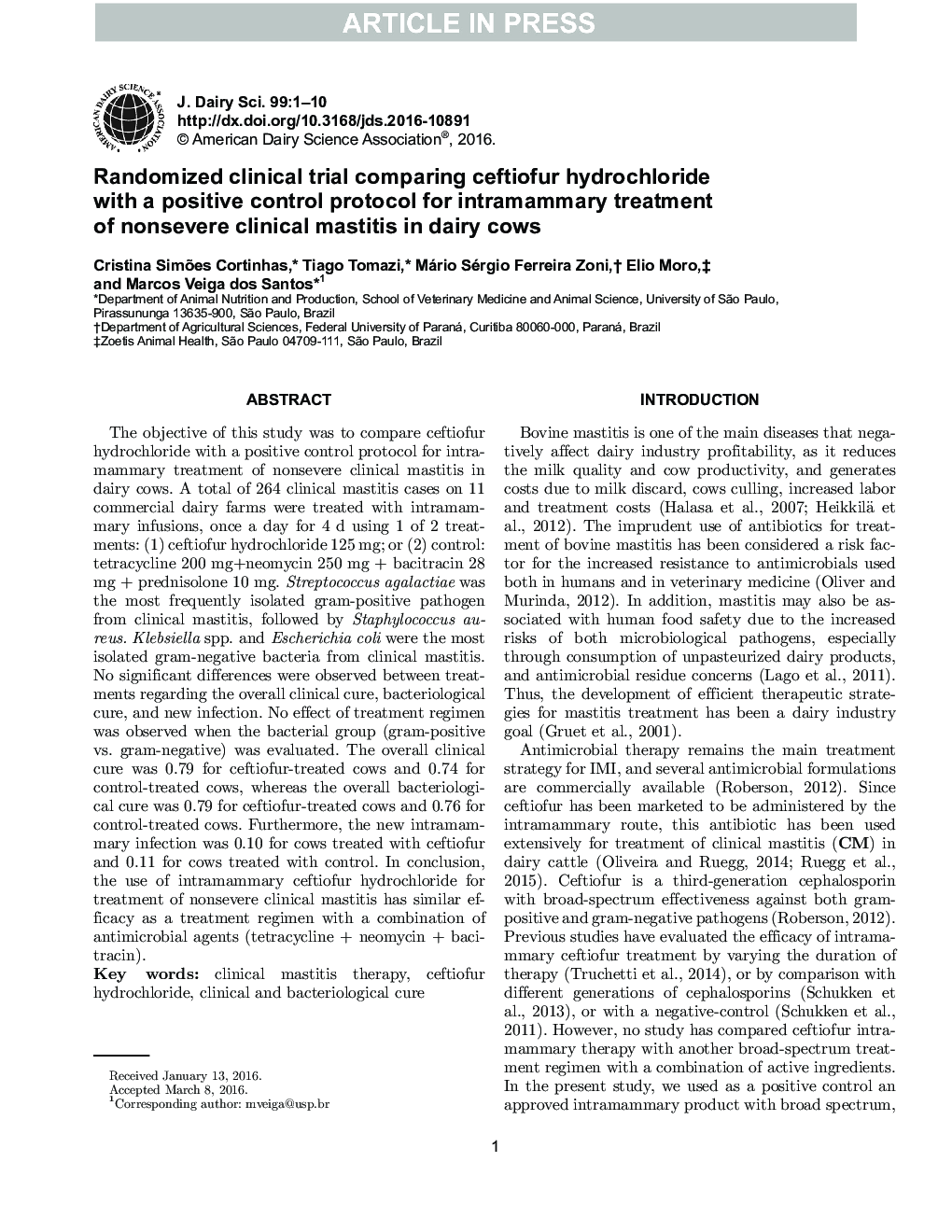| Article ID | Journal | Published Year | Pages | File Type |
|---|---|---|---|---|
| 10973658 | Journal of Dairy Science | 2016 | 10 Pages |
Abstract
The objective of this study was to compare ceftiofur hydrochloride with a positive control protocol for intramammary treatment of nonsevere clinical mastitis in dairy cows. A total of 264 clinical mastitis cases on 11 commercial dairy farms were treated with intramammary infusions, once a day for 4 d using 1 of 2 treatments: (1) ceftiofur hydrochloride 125Â mg; or (2) control: tetracycline 200Â mg + neomycin 250Â mg + bacitracin 28Â mg + prednisolone 10Â mg. Streptococcus agalactiae was the most frequently isolated gram-positive pathogen from clinical mastitis, followed by Staphylococcus aureus. Klebsiella spp. and Escherichia coli were the most isolated gram-negative bacteria from clinical mastitis. No significant differences were observed between treatments regarding the overall clinical cure, bacteriological cure, and new infection. No effect of treatment regimen was observed when the bacterial group (gram-positive vs. gram-negative) was evaluated. The overall clinical cure was 0.79 for ceftiofur-treated cows and 0.74 for control-treated cows, whereas the overall bacteriological cure was 0.79 for ceftiofur-treated cows and 0.76 for control-treated cows. Furthermore, the new intramammary infection was 0.10 for cows treated with ceftiofur and 0.11 for cows treated with control. In conclusion, the use of intramammary ceftiofur hydrochloride for treatment of nonsevere clinical mastitis has similar efficacy as a treatment regimen with a combination of antimicrobial agents (tetracycline + neomycin + bacitracin).
Keywords
Related Topics
Life Sciences
Agricultural and Biological Sciences
Animal Science and Zoology
Authors
Cristina Simões Cortinhas, Tiago Tomazi, Mário Sérgio Ferreira Zoni, Elio Moro, Marcos Veiga dos Santos,
